Short Wave Diathermy (SWD)
What is Short-wave Diathermy?
Short wave diathermy is also known as SWD. Physical therapy treatment involves applying deep heat to an individual’s joints and soft tissues to repair bone or tissue injuries. This approach improves healing by concentrating heat generation on specific areas and reaching deep tissues.
This therapy strategy can effectively reduce inflammation, and joint discomfort, and enhance soft tissue disorders.
The term diathermy refers to heating or causing deep warmth directly in the tissues of the body.
Dia-through
Thermy -heat
Thermotherapy promotes circulation, alleviates pain, and speeds up tissue repair.
- Benefits of heat:
- increased blood flow.
- Relieving Pain
- Improving tissue mobility while healing
- Improved flexibility
- Reduces inflammation.
Frequency of Short-wave Diathermy:
It’s between 10000000 Hz and 100000000 Hz [10-100 MHz].
Mostly used: 27120000 [27.12 MHz].
Wavelength of Short Wave Diathermy:
It is between 30 and 3 meters.
Mostly used 11 metres.
How does shortwave diathermy (SWD) work?
Shortwave treatment uses high-frequency electromagnetic radiation that is absorbed by the body’s tissues. Because bodily tissue includes ions, electromagnetic radiation causes the ions to flow in different directions, resulting in friction between the moving ions and the surrounding tissues. This alleviates joint discomfort and promotes soft tissue recovery.
The machine circuit for short-wave diathermy:
Because no mechanical device can create enough fast movement to produce a high-frequency current, this current is generated by discharging a condenser through a low-ohmic resistance inductance. The fundamental oscillator circuit comprises a condenser and an inductance, and currents of various frequencies are generated by selecting appropriate condensers and inductions.
If a very high-frequency current is required, the capacitance and inductance are minimal, but to create a current of lower frequency, a bigger condenser and/or inductance are utilized. To generate the high-frequency current, the condenser must be induced to charge and discharge frequently. To do this, the oscillator is integrated into a valve circuit.
The patient circuit for short-wave diathermy:
Inductors connect the circuit to the machine circuit, generating a matching high-frequency current in the resonator circuit via electromagnetic induction.
The oscillator and resonator circuits must be in resonance with one another, which means that the product of inductance and capacitance must be the same in both circuits.
The electrodes and the patient’s tissues create a capacitor, the capacitance of which varies on the size of the electrodes, as well as the distance and material between them, and is thus distinct for each application.
Indication of the circuit:
To indicate a circuit, the equipment’s indicator light turns on or changes color.
An ammeter hooked into the resonator circuit displays a maximum reading, which is reduced by rotating the knob that controls the variable capacitor in either direction.
A tube carrying a tiny quantity of neon gas is put into the electric field between the electrodes or at the end When the circuits are in resonance, the cable will flash the most intensely.
Indication of Short Wave Diathermy:
- Musculoskeletal Disorder
- Ligament Sprain
- Muscle Strain
- Capsular lesion (frozen shoulder).
- Degenerative joint disease (OA)
- joint stiffness.
Chronic Inflammatory Conditions:
- Tendinitis & Bursitis
- Tenosynovitis
Application of Short-wave diathermy:
- Capacitor Field Method
- Cable technique.
- The monode electrode approach
Capacitor Field Method:
Electrodes are inserted on each side of the portion to be treated, separated from the skin by an insulator.
The electrodes function as capacitor plates, while the dielectric is made up of the patient’s tissue and the insulating substance that separates them from the electrodes.
When the current is supplied, rapidly alternating charges form on the electrodes, resulting in a rapidly alternating electric field between them.
The electric field affects the materials it contains.
Cable technique:
When SWD is administered via cable, the electric field, magnetic field, or both effects can be employed at the same time.
The Electrodes are made of a thick, insulted cable that completes the patient’s circuit of the machine.
The cable is positioned in proximity to the patient’s tissue, but separated by an insulating layer.
The high-frequency current oscillates in the wire, creating a fluctuating electrostatic field between its ends and a variable magnetic field around its center.
The monode electrode approach:
It operates on the same concept as a cable.
It is made out of a flat helix of thick wire set on a stiff support.
A condenser in parallel with the coil allows you to utilise a shorter length.
Heating an eddy current produced in an area formed like a hollow ring, but with structural support, allows the electrode to be employed with air spacing.
Types of electrodes used in short-wave diathermy:
Flexible pads:
it is made of metal electrodes enclosed in rubber, creating an electrostatic field.
Space plates:
it is made of hard metal electrodes.
Perspex covers the electrostatic field.
Coil or cable:
Electrodes, which are wires with plugs at each end, produce an electromagnetic field.
The monode:
it is a flat, stiff coil with a plastic cover Electromagnetic field.
The diplode:
electrodes consist of a flat coil. Electrodes wrapped in a perspex cover with two wings An electromagnetic field.
Position of Electrode for Short Wave Diathermy:-
The Electrodes’ positions should be set such that the electric field is directed through the structure to be treated.
- High impedance structure = Electrode as distant as possible from the electric field.
- Low impedance structure = electrode parallel to the electric field.
- If achievable, put electrodes across an even surface of the body.
- Irregular surface = field tends to concentrate on the most conspicuous section.
- Regular surface = lower concentration by employing a broad gap.
Contra-planer position:
it is typically employed for deep-placed structures.
The electrodes are put on opposing sides of the bodily portion that has to be treated.
Thus, the electric field is guided through the deep tissue.
Electrodes must be parallel to the skin and not near to one another.
For example, trunk or limb.
Co-planer position:
it is often employed for shallow constructions.
The electrodes are put side by side on the identical areas of the body that need to be treated.
Provide a suitable spacing between electrodes so that the tissue route has a lower resistance.
For example, the spine.
The cross-fire position:
it is utilized to treat air-filled cavities and deep structures located in vascular areas.
In this posture, half of the therapy is delivered in one aspect, while the other half is given in the opposite aspect of the first.
As a result, the electric field is at a right angle to the one obtained during the first stage of the therapy.
For example, for the knee joint, half therapy means medial and lateral, whereas half treatment means anterior and posterior.
Examples include the frontal, maxillary, and ethmoid sinuses, as well as pelvic organs.
For the face, if the patient wears contact lenses, they should be removed during treatment since the heating action causes the lenses to melt.
Monopolar position:
it is Typically utilized for superficial lesions.
The active electrode is put over the lesion, whereas the indifferent electrode is attached to a distant portion of the body.
Each electrode has its electric field.
The lines of force emanating from the electrode.
Thus, as the distance from the electrode increases, the field density decreases.
Dosage of the Short-wave Diathermy Machine:
In most cases, the machine’s intensity is determined by its comforting warmth.
Duration is 20 to 30 minutes and chronic lesions place for at least 30 minutes.
Treatment must be administered daily or on alternate days.
For acute inflammation:
Less intensity.
Increased frequency.
5–10 minutes.
Twice a day provide a treatment
Preparation to the patient:
first, check for any contraindications and assess their skin feeling.
The patient is entirely comfy and supported by a hardwood frame that is devoid of metal.
Mostly relied on the sofa, chair, or table for support.
Remove any jewelry, money, and metallic objects from the sufferer.
Wash your skin over the treatment area.
Wounds and sinuses should be cleaned and covered with a dry dressing.
Monitoring the treatment:
all meters of equipment are set to zero (beginning position) before commencing.
Select the appropriate power level for the patient’s condition.
Gradually increase the intensity until you achieve your preferred heating level.
The physical therapist should be on call for the patient throughout the therapy time.
At the end of the treatment, the control knobs are reset to zero, the current is turned off, and the electrodes are removed.
Physiological effects of short-wave diathermy:-
- Heat increases the diameter of blood vessels.
- Increase blood circulation.
- Remove waste products.
- Increases nutrient supply in the afflicted region.
- Relieve Pain and Reduce Muscle Spasms.
Therapeutic use of Short Wave Diathermy
Effect on inflammation:
Dilated arterioles and capillaries enhance blood flow to the region, providing more oxygen and nutrients.
Adding more antibodies and white blood cells.
Increases the flow of fluid into the tissues. These effects help to remove waste products.
This impact helps to resolve inflammation.
acute stage = regular dosage.
Sub-acute stage = higher dosage.
chronic stage = thermal dosage.
Effects of bacterial infection:
Inflammation is the tissue’s natural reaction to the presence of microorganisms.
The main hallmarks include vasodilation, fluid exudation into the tissue, and a rise in white blood cell and antibody concentrations in the region.
Heating the tissues enhances these changes.
As a result of reinforcing the body’s usual strategy for dealing with the infecting organism, short-wave diathermy may be useful in the treatment of bacterial infections such as boils, carbuncles, and abscesses.
Heat may directly kill bacteria.
However, raising the bodily tissue to the required temperature would result in tissue damage.
Traumatic conditions :
SWD has the same effect on traumatic situations as inflammation due to the presence of lesions.
Exudation of fluid into the tissue and increased blood flow to the region aid in waste elimination.
Improved blood flow promotes healing:
Recent injuries require the same treatment as those in the acute stage.
Stiff joints and other injury-related symptoms require a higher dosage.
Reducing healing time:
it can help to enhance wound healing.
An increased blood flow to the tissues may be beneficial, assuming that the vascular response to heat is normal.
Relief of pain:
Research suggests that modest warmth can effectively relieve pain.
Presumably as a result of sedative effects.
Pain may be caused by the buildup of metabolic waste products in the tissue.
Increase the flow of blood and aid in the removal of harmful substances.
Strong superficial heating relieves pain by counteracting inflammation.
The inflammatory process relieves pain by resolving inflammation.
Contraindication of Short Wave Diathermy
Haemorrhage:
Heating tissue with a diathermic current can dilate blood vessels, thus it should not be used immediately after an accident or in cases of recent haemorrhage. It should not be applied to the abdomen or pelvis during menstruation, nor should it be used in diseases where bleeding is possible, such as gastric or intestinal illness with ulceration or hemophilia.
Venous thrombosis or phlebitis.
These conditions exclude the administration of SWD to the area drained by the afflicted vessels, since the increased flow of blood may dislodge the clot or exacerbate the inflammation.
Artery disease.
Diathermy should not be used on portions with a faulty arterial blood supply. The failure of the circulation to disperse heat may result in a rise in temperature to a level that might cause a tissue burn.
Diathermy:
it should not be used on the abdomen or pelvis during pregnancy.
Metal in tissues:
Metal causes tissue heating and raises the risk of burns from post-operative metal implants in the body.
Disturbed skin feeling.
It is safer to avoid using diathermy on regions with a lack of skin sensibility.
Tumours:
Avoid using short-wave diathermy near malignant growths. The increase in metabolism caused by the rise in temperature may enhance the pace of growth.
x-ray:
X-rays devitalize tissues, making them more prone to injury. SWD should not be used on locations that have recently been exposed to therapeutic amounts of X-rays.
Patients at particular risk
It is risky to administer SWD to patients who do not comprehend the level of heating necessary and the importance of reporting excessive heating. As a result, therapy is not appropriate for little children or people with mental disabilities. Similarly, it is unsafe to treat unconscious patients or those who are prone to losing consciousness, such as epileptics.
Who Is Unqualified for Short Wave Diathermy?
- Pacemaker
- Prothesis
- The intrauterine device (IUD)
- Cancer
- Reduced skin sensation.
- Peripheral Vascular Disease
- Tissue with a limited blood supply (ischemia).
- Infections
- fractured or shattered bones
- Bleeding Disorders
- Serious heart, liver, or renal diseases.
- Low skin feeling.
- Pregnancy
- Perspiration
- Wound dressings
Dangers of Short Wave Diathermy:
Burn:
SWD can produce heat burns.
So before therapy, alert the patient.
In severe situations, coagulation and blistering can cause tissue damage, resulting in white areas.
In Milder cases, tissue is not damaged, but may be visible red patches.
If the damage develops as quickly as feasible, remove the electrodes.
- Causes of Burn:
The intensity of the electric field
Use of excess current.
Hypersensitivity in the skin
Impaired blood flow.
Leads that contact the skin
Scalds:
it is caused by wet heat.
This may happen if the area being treated is moist.
Overdose:
it can lead to heightened symptoms, discomfort, and inflammation in tight spaces.
At that point, lessen the strength of successive applications.
Gangrene:
Heat promotes chemical and metabolic changes in tissues, leading to gangrene formation.
As a result, there is an increase in demand for oxygen, and gangrene develops.
Heat should never be delivered directly to a region with poor arterial blood flow.
Electric shock:
it can occur when contact is made with the equipment circuit when the current is switched on.
However, the current apparatus is frequently not feasible.
Sparking:
it happens when one electrode is contacted while the current is applied.
As a result, the patient must be reminded not to touch the electrodes.
Faintness:
it is caused by hypoxia in the brain after a drop in blood pressure.
It mainly happens in intensive therapy.
FAQs
What is the principle behind shortwave diathermy?
Shortwave diathermy generates heat by converting high-frequency electromagnetic radiation. It may be used in pulsed or continuous energy waves. It has been used to relieve discomfort from kidney stones and pelvic inflammatory illness.
How does SWD work?
Short-wave diathermy is a therapy method that uses high-frequency electromagnetic waves to generate heat and relieve pain and edema caused by soft-tissue injuries.
What exactly is short-wave diathermy used for?
Short-wave diathermy is a physiotherapy treatment that generates deep heat in the joints and soft tissues to aid in recovery. This type of therapy is used to treat a variety of ailments, including arthritis, back pain, tendonitis, and chronic bone and muscle injuries.
How long does it take to treat short-wave diathermy?
The therapy normally takes 20-30 minutes.
What are the advantages of SWD?
Short Wave Diathermy (SWD) is a technique that uses electromagnetic waves to target soft tissues and joints. This method of therapy has several advantages, including reduced inflammation, joint discomfort, and complete retention. Furthermore, the application of heat waves promotes circulation and muscle rehabilitation.
What is SWD, and how is it used in osteoarthritis?
Short-wave diathermy (SWD) is an electrotherapeutic technique for the conservative treatment of knee osteoarthritis.
What are the benefits of short-wave diathermy?
Diathermy has several advantages, including pain reduction, quicker healing, enhanced blood flow, range of motion, and greater mobility. Heating the targeted regions of injured tissue enhances blood flow and makes the connective tissue more flexible.
When not to use diathermy?
Diathermy should not be used on a patient with a pacemaker or an implanted neurological device.
References
- What is Shortwave Diathermy (SWD)? What conditions are treated by Shortwave Diathermy (SWD)? Who will benefit from Shortwave Diathermy (SWD)? (n.d.). Cbphysiotherapy. https://cbphysiotherapy.in/therapies-offered/shortwave-diathermy-swd
- P. (2022, December 27). Short Wave Diathermy | Physiotherapy Treatment & its Effectiveness. https://www.physiotattva.com/blog/short-wave-diathermy-physiotherapy-treatment-its-effectiveness
- Clinic, M. P. (2023, November 4). SHORT WAVE DIATHERMY (SWD): Indication, Contraindications. Mobile Physiotherapy Clinic. https://mobilephysiotherapyclinic.in/short-wave-diathermy/
- V. (2023, July 7). Use of Short Wave Diathermy (SWD) in Physiotherapy. Mobility Physiotherapy Clinic. https://mobilephysiotherapyclinic.net/use-of-swd-in-physiotherapy/

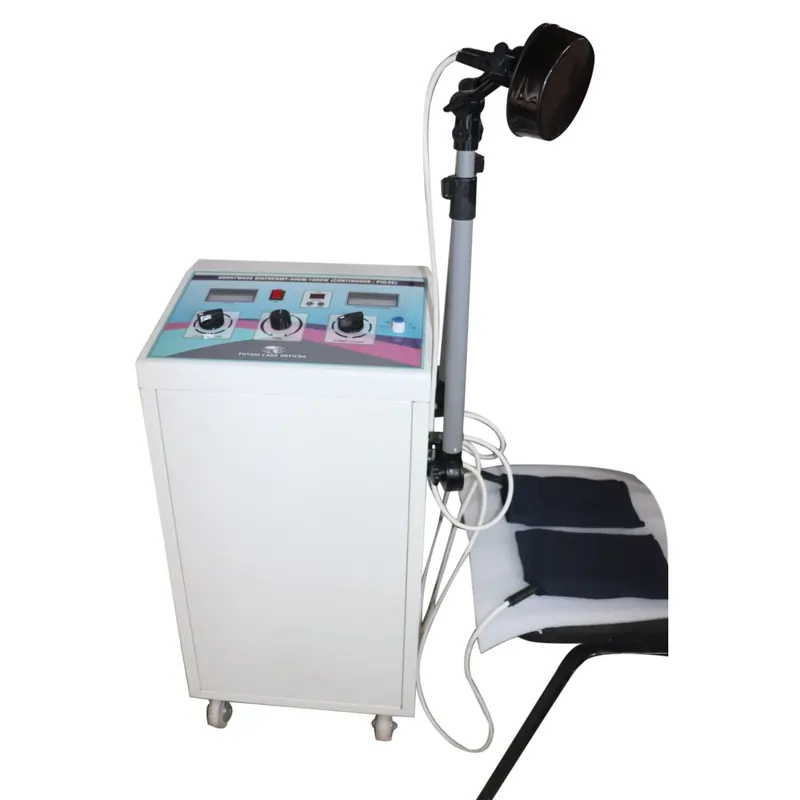
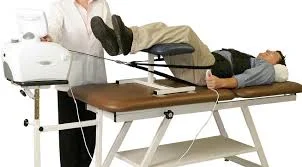
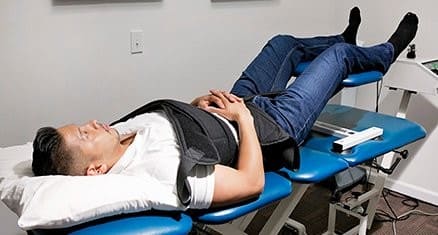
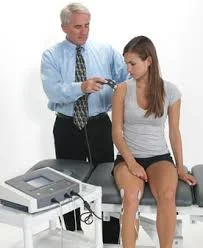
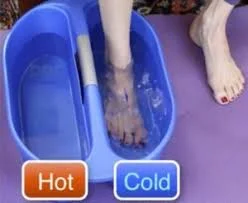
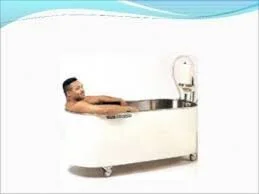
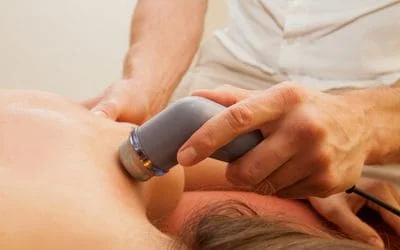
One Comment